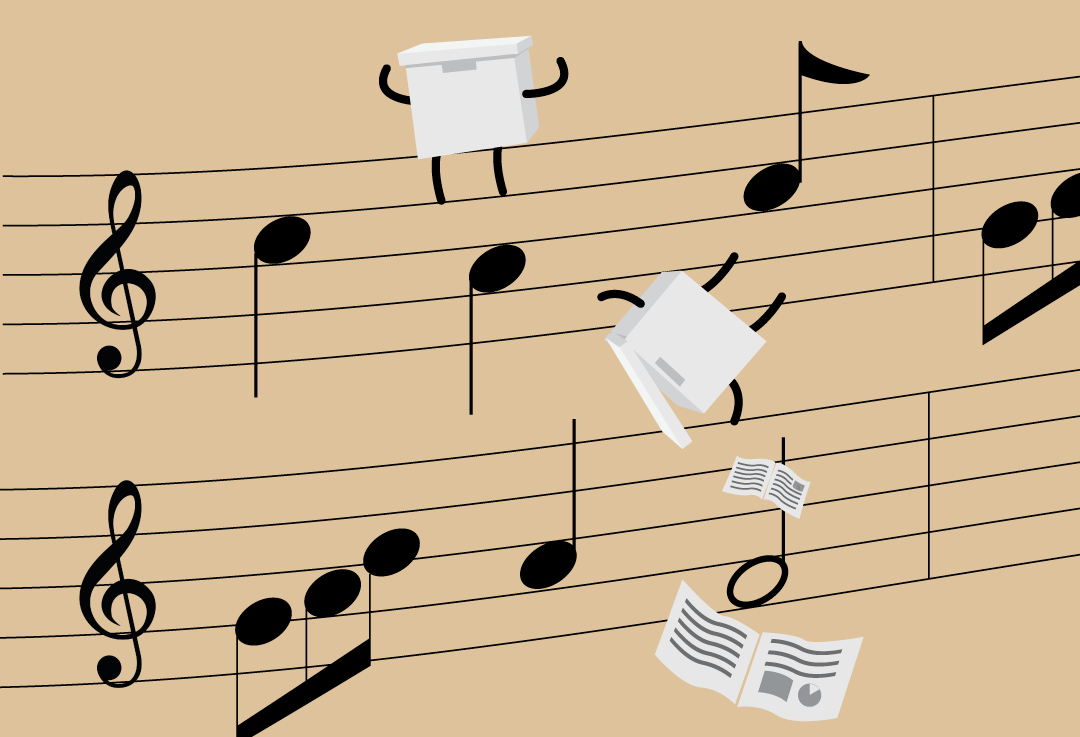Is your sheet music storage not working in harmony? Here's your guide to storing and protecting your sheet music at home!
If you're a music teacher or just love to play sheet music then you'd understand how quickly your collection can become an unruly mess without a solid storage system in place.
Now there are many ways in which you can take your collection from discordant to harmonious but there are always the same three golden rules when it comes to storage.
- Make sure your music is protected from damage.
- Make sure the music you want is easy to locate.
- Make sure your collection isn't wasting space.
Here's a pro tip from the storage and archiving GOATs, these golden rules should apply to ALL storage, so lock them away in your memory bank or get them tattooed on your neck for posterity.
Finding the right storage container.
If you visualise your organised collection as a beautiful palace of utility and organisation then storage containers are your concrete slab, your foundations.
They are the first job you need to tackle, everything depends on them being strong and if you don't have them then your beautiful palace will sink into the mud in no time.
One of the great things about sheet music but also a major challenge with storing sheet music is that there is so much size variety. So we will discuss 4 types of sheet music.
9 x 12" (folio size, used for parts and some scores, equivalent to UK/EU paper size C4 which is 9X12. 8), 11 x 17" (UK/EU A3) or 11 x 14" UK/EU B4) (scores, and very rarely, parts), and 8.5 x 11" (roughly equivalent to UK/EU A4) (choral scores/parts)
For folio size we recommend using a Lever Arch Folder. To further organise Lever Arch Folders you can store them in a LAF storage box. Display folders are a smaller capacity option which are handy if you have a number of smaller categories.

A3 sized sheet music can ideally be stored in an A3 size storage box. These are larger than a standard office archive box and will store your music without any fear of scrunching.

B4 sized or smaller can be perfectly stored within a foolscap box. These boxes are great storing thin sheets or books which are not strong enough to stand up on their own.

Most music doesn't have the name written down the spine - it's too narrow. To fix this, you generally need to make custom labels. Make sure to carefully label each box you create.
Harmonising your collection
So now you've got your foundations in place it's time to put in place a system to organise it. It's important (especially if you have a lot of music) to be able to be able to find a particular piece as soon as you need it.
If you have music for a variety of instruments it can be useful to organise it by instrument. Create a section in your cupboard for each instrument and then arrange each section alphabetically by either composer or title.
Alternatively you can organise your collection by genre or even size. There is no right or wrong way to categorise your collection as long as you stick to whatever categories you choose.
Happy organising!





